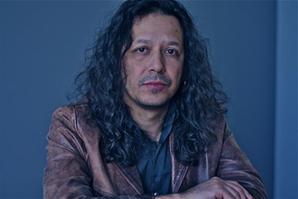
Glen Duncan was born and raised in Bolton, Lancashire, England. After studying philosophy and literature in university, he worked for four years as a bookseller in London before moving from the sales counters of bookstores to the shelves and display windows with his own books. His first novel, Hope, was published to critical acclaim on both sides of the Atlantic in 1997, and he has followed with seven more, including I, Lucifer (2002) and The Bloodstone Papers (2006). In 2005, he was named one of Britain's "20 best young novelists" by the Times Literary Supplement. He lives in London.
On your nightstand now:
I've just finished Larry McMurtry's Texasville and Duane's Depressed. For the first time in years I was moved to tears--actually lay there blubbing like a child--when one of the characters died. Also on the nightstand (or bedside table as we call it in the Old World) is Faulkner's Light in August, Mary Gaitskill's Bad Behaviour and a collection of poems by Australian poet John Kinsella, Peripheral Light.
Favorite book when you were a child:
The Enchanted Wood by Enid Blyton. Actually, anything magical by Enid Blyton. I suspect she was a secret and regular user of hallucinogenic drugs.
Your top five authors:
(Excluding the classics, and restricting myself to novelists): Anthony Burgess, John Updike, Martin Amis, Paul Bowles, Deirdre Madden.
Book you've faked reading:
Inexplicably, Crime and Punishment. Every time I've tried I've developed severe headaches and visual disturbances. My most recent attempt took me to within 70 pages of finishing--but the whole time it was like being in a dark tunnel watching the light at the end shrinking. I had to stop. I think a neurophysiologist should get involved.
Book you're an evangelist for:
Not that it needs my proselytizing, but Pilgrim at Tinker Creek by Annie Dillard. A woman spends a year by a creek in the Blue Ridge Mountains in Virginia, observing the natural world around her. Not a very racy premise. But Dillard's giant intelligence and poetic imagination seduce from the first page, and what follows is a singular, compelling and celebratory meditation on the Heraclitean fire.
Book you've bought for the cover:
The Devil Tree by Jerzy Kosinski. I was 15, newly graduated from pulp horror to proper grown-up books, a graduation based on the discovery that proper grown-up books often had lots of sex and weirdness in them. My edition of The Devil Tree had a naked woman on the cover, but she was made from clay and sufficiently eerily lit so that people would think I was precociously arty rather than a gurning pervert. For the record (and this will come as no surprise to Kosinski aficionados) the novel is full of sex and weirdness.
Book that changed your life:
Without a doubt, John Irving's The World According to Garp. Reading it made me want to become a novelist. Most loftily because I was converted to Garp's religion of fierce memory and muscular imagination, least loftiily because I just wanted to be Garp. I wanted to sit at home all day cooking and making up stories while my hot brainy professor wife went out and did a real job.
Favorite line from a book:
"Take most people, they're crazy about cars... I don't even like old cars. I mean they don't even interest me. I'd rather have a goddam horse. A horse is at least human, for God's sake." --The Catcher in the Rye.
Book you most want to read again for the first time:
The Catcher in the Rye. The above line says it all. Read at the right age it gives you the sudden, giant, joyous relief of discovering you're not the only sane person in the asylum.

